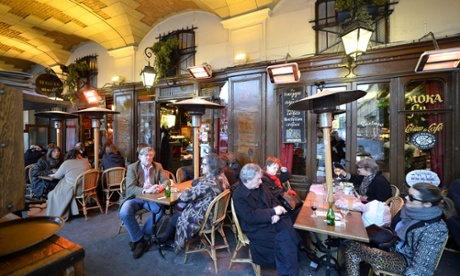
How do you judge which district of Paris, London, New York – any city – is the best to live in? Setting aside the many opinions on the subject, you might watch the tourists. When people are visiting a city especially to enjoy it, where do they stay? Until recently they had to stay wherever the hotels already were, so their choices told you little. Now however, with online accommodation sharing, people seem to be choosing to stay where people live – and you can get this kind of data from Airbnb.
Or you nearly can. Airbnb doesn’t give out guest data very casually, or, at least, it doesn’t to me, but you can learn a lot from its listings. Paris is the world’s biggest city for Airbnb, with more than 40,000 listings (compared with New York’s 34,000 and London’s 23,000). During last summer alone, 66,320 Airbnb guests stayed just in the Marais, a historic arty district in the centre, according to the Wall Street Journal. As the newspaper points out, that is slightly more than the Marais’s 64,795 actual residents. One flat in the Marais could easily host several dozen people over the course of a busy summer, so the locals were probably not outnumbered by guests at any given time, but still. The Marais isn’t very big and 66,320 is a lot of people.
For the UK’s capital, Airbnb provides a list of 48 suggested London “neighbourhoods” – a fine word, albeit not one that many Londoners would use. The list does not cover the whole capital, nor is each neighbourhood the same size. And, of course, there’s no way of knowing how many of the listings are busy, and how many have never been used. Even so, you can click on each one to see how many rentals are currently being offered there – and when you do, it is revealing.
For one thing, the very centre of London isn’t where it’s at. Covent Garden (239 listings), Soho (194), the City of London (185) and Westminster (140) are all in the bottom half of the list. Compare that with Walworth (360) and the Isle of Dogs (373), which I doubt many Londoners think of as tourist destinations. In truth, this probably reflects the fact that there are more dwellings outside the centre – and the fact that people who live in the centre are so rich that they don’t need to bother with Airbnb. This is most stark when you look at the figures for Mayfair (113), Belgravia (54) and, most of all, St James’s (23), which sits in splendid isolation at the bottom of the list.
Kensington (755) and Notting Hill (612) do still fare well as the second and fourth most popular tourist neighbourhoods in London – possibly because they are not only very famous but also have a fair number of flats and houses – but at the very top of the table there is a more revealing clue to as to what is going on. In third place, Whitechapel/Brick Lane (680) and, towering above all others, Shoreditch (909), seem to demonstrate that using Airbnb is, for now at least, still a hipster thing. Maybe in a couple of years we’ll see what foreigners really think.

